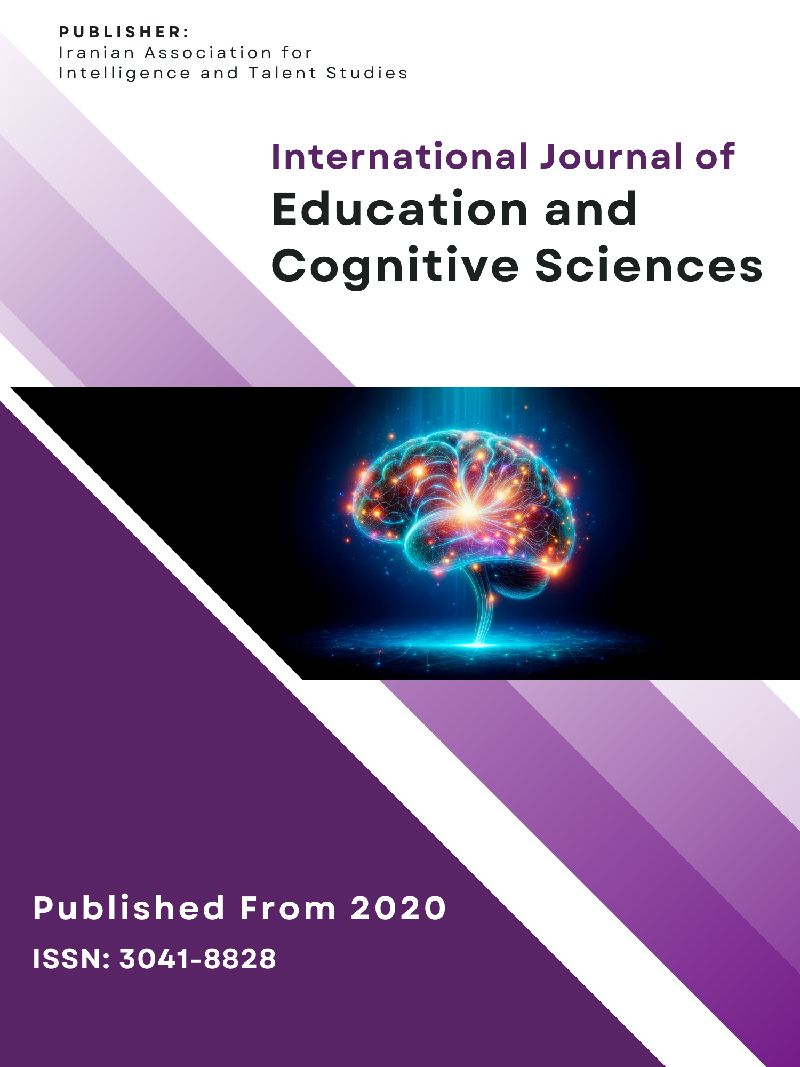Personality and Background Characteristics in Patients with Methamphetamine-Induced Psychosis
Abstract
Purpose: This study aimed to examine the association between personality traits and the occurrence of psychosis among methamphetamine users.
Methods and Materials: A descriptive, cross-sectional study was conducted among 200 adults with confirmed methamphetamine dependence recruited from addiction treatment centers in North Khorasan Province, Iran. Methamphetamine-induced psychosis was diagnosed using structured clinical interviews based on DSM-5 criteria, initially by a clinical psychologist and then confirmed by a psychiatrist. Personality characteristics were assessed with the Millon Clinical Multiaxial Inventory-III (MCMI-III), adapted and validated for the Iranian population. Demographic and background data—including age, gender, education, marital and employment status, housing, and concurrent substance use—were collected via structured questionnaires. Statistical analyses were performed using independent-samples t-test, Mann–Whitney U test, and chi-square test at a significance level of p < 0.05.
Findings: Significant differences were observed between psychotic and non-psychotic methamphetamine users across several personality domains. Psychotic individuals scored higher on schizoid, schizotypal, paranoid, avoidant, dependent, depressive, sadistic, negativistic, masochistic, and borderline traits (p < 0.05), while histrionic traits were significantly lower in the psychotic group (p = 0.016). Demographically, psychotic users were more likely to have lower education (p = 0.043) and to be unmarried or divorced (p = 0.048). Polysubstance use was common, with concurrent use of methamphetamine with opium (55.5%) and heroin (55%) being most frequent.
Conclusion: Specific personality patterns, particularly within Clusters A and B, are strongly associated with methamphetamine-induced psychosis. Incorporating personality assessment into addiction treatment may improve risk detection and enable personalized interventions to prevent or mitigate psychotic outcomes among methamphetamine users.
Downloads
References
Alammehrjerdi, Z., Briggs, N. E., Biglarian, A., Mokri, A., & Dolan, K. (2019). A Randomized Controlled Trial of Brief Cognitive Behavioral Therapy for Regular Methamphetamine Use in Methadone Treatment. Journal of Psychoactive Drugs, 51(3), 280-289. https://doi.org/10.1080/02791072.2019.1578445
Anderson, G. N., Conway, C., & Bravo, A. J. (2024). Distress Tolerance Is Linked With Substance Use Motivations and Problems in Young Adults Across Four Continents. Journal of personality, 93(3), 706-723. https://doi.org/10.1111/jopy.12963
Arunogiri, S., Foulds, J. A., McKetin, R., & Lubman, D. I. (2018). A systematic review of risk factors for methamphetamine-associated psychosis. Australian and New Zealand Journal of Psychiatry, 52(6), 514-529. https://doi.org/10.1177/0004867417748750
Arunogiri, S., Petrie, M., Sharkey, M., & Lubman, D. I. (2017). Key differences in treatment-seeking stimulant users attending a specialised treatment service: a means of early intervention? Australasian Psychiatry, 25(3), 246-249. https://doi.org/10.1177/1039856216684737
Barr, A. M., Panenka, W. J., MacEwan, G. W., Thornton, A. E., Lang, D. J., Honer, W. G., & Lecomte, T. (2006). The need for speed: an update on methamphetamine addiction. Journal of Psychiatry & Neuroscience, 31(5), 301-313. http://europepmc.org/abstract/MED/16951733
Chen, C. K., Lin, S. K., Sham, P. C., Ball, D., Loh, W., & Murray, R. M. (2005). Morbid risk for psychiatric disorder among the relatives of methamphetamine users with and without psychosis. American Journal of Medical Genetics Part B: Neuropsychiatric Genetics, 136(1), 87-91. https://doi.org/10.1002/ajmg.b.30187
Darke, S., Kaye, S., McKetin, R., & Duflou, J. (2008). Major physical and psychological harms of methamphetamine use. Drug and Alcohol Review, 27(3), 253-262. https://doi.org/10.1080/09595230801923702
Degenhardt, L., Baxter, A. J., Lee, Y. Y., Hall, W., Sara, G. E., Johns, N., Flaxman, A., Whiteford, H. A., & Vos, T. (2014). The global epidemiology and burden of psychostimulant dependence: Findings from the Global Burden of Disease Study 2010. Drug and Alcohol Dependence, 137(1), 36-47. https://doi.org/10.1016/j.drugalcdep.2013.12.025
Hides, L., Dawe, S., McKetin, R., Kavanagh, D., Young, R., Teesson, M., & Saunders, J. (2014). Primary and substance-induced psychotic disorders in methamphetamine users. Psychiatry research, 226. https://doi.org/10.1016/j.psychres.2014.11.077
Horan, W. P., Blanchard, J. J., Clark, L. A., & Green, M. F. (2008). Affective traits in schizophrenia and schizotypy. Schizophrenia Bulletin, 34(5), 856-874.
Kaviyani, F., Khorrami, M., Heydari, H., & Namvar, M. (2023). Understanding the laps and relapse process: in-depth interviews with individual who use methamphetamine. Substance Abuse Treatment, Prevention, and Policy, 18(1), 41.
Kwon, N. J., & Han, E. (2018). A commentary on the effects of methamphetamine and the status of methamphetamine abuse among youths in South Korea, Japan, and China. Forensic Science International, 286, 81-85. https://doi.org/10.1016/j.forsciint.2018.02.022
McKetin, R., Lubman, D. I., Baker, A. L., Dawe, S., & Ali, R. L. (2013). Dose-related psychotic symptoms in chronic methamphetamine users: evidence from a prospective longitudinal study. JAMA Psychiatry, 70(3), 319-324. https://doi.org/10.1001/jamapsychiatry.2013.283
McKetin, R., McLaren, J., Lubman, D. I., & Hides, L. (2006). The prevalence of psychotic symptoms among methamphetamine users. Addiction, 101(10), 1473-1478. https://doi.org/10.1111/j.1360-0443.2006.01496.x
Nazari, A., Hojjat, S. K., Moghadam, A. J., Khalili, M. N., Akbari, H., Khorrami, M., Sherafati, J., Akbarzadeh, M., Farimani, Z. B., & Kaviyani, F. (2023). The survey of prevalence and content of hallucinations and delusions in methamphetamine dependents. International Journal of High Risk Behaviors and Addiction, 12(2). https://doi.org/10.5812/ijhrba.134015
Noori, R., Daneshmand, R., Farhoudian, A., Ghaderi, S., Aryanfard, S., & Moradi, A. (2016). Amphetamine-Type Stimulants in a Group of Adults in Tehran, Iran: A Rapid Situation Assessment in Twenty-Two Districts. Iran J Psychiatry Behav Sci, 10(4). https://doi.org/10.17795/ijpbs-7704
Pourmohseni, F., & Niksarsh, M. (2022). Investigating the Role of Psychopathic Personality Traits and Aggression in Tendency towards Substance Abuse in Students with Conduct Disorder Symptoms. Addiction Research Quarterly, 16(63), 223-244. https://doi.org/10.52547/etiadpajohi.16.63.223
Rathitharan, G., Truong, J., Tong, J., McCluskey, T., Meyer, J. H., Mizrahi, R., Warsh, J., Rusjan, P., Kennedy, J. L., Houle, S., Kish, S. J., & Boileau, I. (2020). Microglia imaging in methamphetamine use disorder: a positron emission tomography study with the 18 kDa translocator protein radioligand [F-18]FEPPA. Addiction Biology. https://doi.org/10.1111/adb.12876
Rounsaville, B. J., Kranzler, H. R., Ball, S., Tennen, H., Poling, J., & Triffleman, E. (1998). Personality disorders in substance abusers: relation to substance use. The Journal of Nervous and Mental Disease, 186(2), 87-95.
SaaMhs, A. (2017). Substance Abuse and Mental Health Services. Results from the 2016 National Administration Survey on Drug Use and Health: Detailed Tables (HHS Publication No SMA 17-5044, NSDUH Series H-52). https://www.samhsa.gov/data/sites/default/files/NSDUH-DetTabs-2016/NSDUH-DetTabs-2016.htm
Sansone, R. A., & Sansone, L. A. (2011). Substance use disorders and borderline personality: common bedfellows. Innovations in Clinical Neuroscience, 8(9), 10-13. https://www.ncbi.nlm.nih.gov/pubmed/22010059
Shi, J., Yao, Y., Zhan, C., Mao, Z., Yin, F., & Zhao, X. (2018). The Relationship Between Big Five Personality Traits and Psychotic Experience in a Large Non-clinical Youth Sample: The Mediating Role of Emotion Regulation. Frontiers in Psychiatry, 9, 648. https://doi.org/10.3389/fpsyt.2018.00648
Shoaa Kazemi, M., Mahamid, F., & Hamamra, B. (2025). The lived experiences of women overcoming addiction and self-harming behaviors. Journal of Ethnicity in Substance Abuse, 1-16. https://doi.org/10.1080/15332640.2025.2479608
Tsyngauz, E. (2023). Importance of Longitudinal Assessments in a Case of Comorbid Polysubstance Use Disorder and Borderline Personality Disorder Misdiagnosed as Bipolar I Disorder. Cureus. https://doi.org/10.7759/cureus.45253
Unadkat, A., Subasinghe, S., Harvey, R. J., & Castle, D. J. (2018). Methamphetamine use in patients presenting to emergency departments and psychiatric inpatient facilities: what are the service implications? Australasian Psychiatry, 27(1), 14-17. https://doi.org/10.1177/1039856218810155
Verheul, R. (2001). Co-morbidity of personality disorders in individuals with substance use disorders. European Psychiatry, 16(5), 274-282. https://doi.org/10.1016/S0924-9338(01)00578-8
Downloads
Published
Submitted
Revised
Accepted
Issue
Section
License
Copyright (c) 2025 Ali Nazari, Seyed Kaveh Hojjat, Mohammad Khorrami (Author); Faezeh Kaviyani; Asiyeh Jafakesh Moghaddam, Hadi Akbari, Nazanin Gholizadeh, Parastoo Niloofar, Ali Fazeli (Author)

This work is licensed under a Creative Commons Attribution-NonCommercial 4.0 International License.










